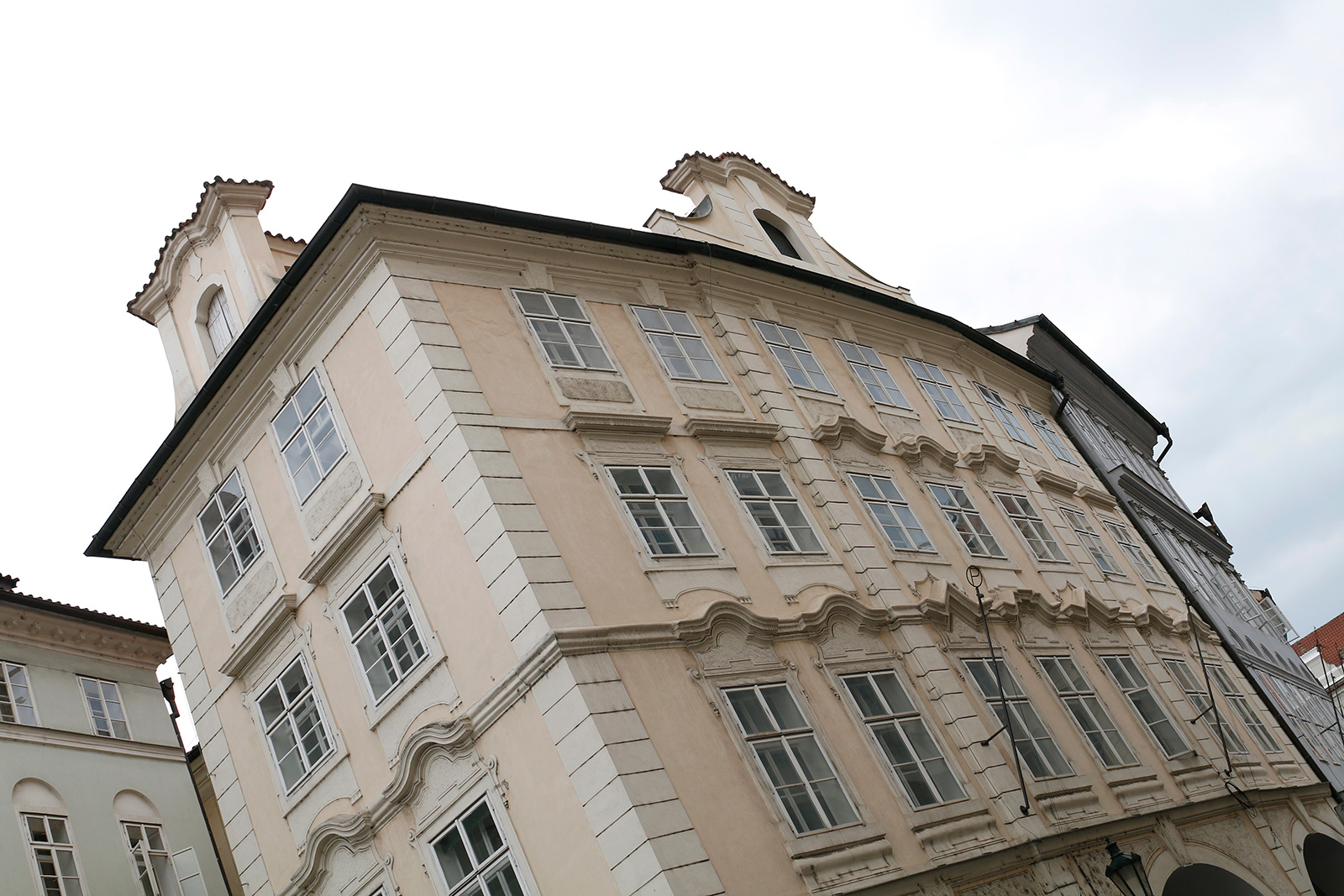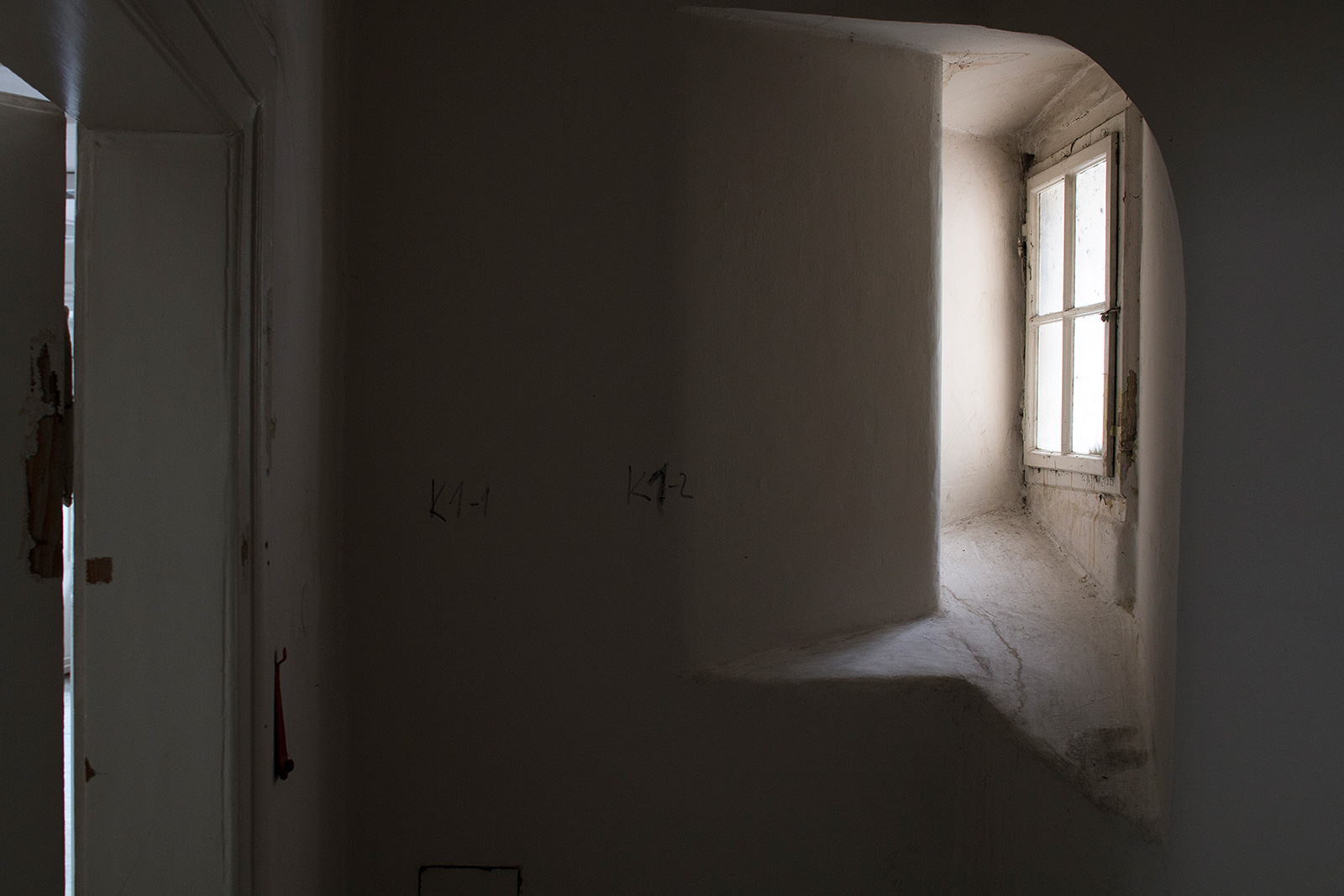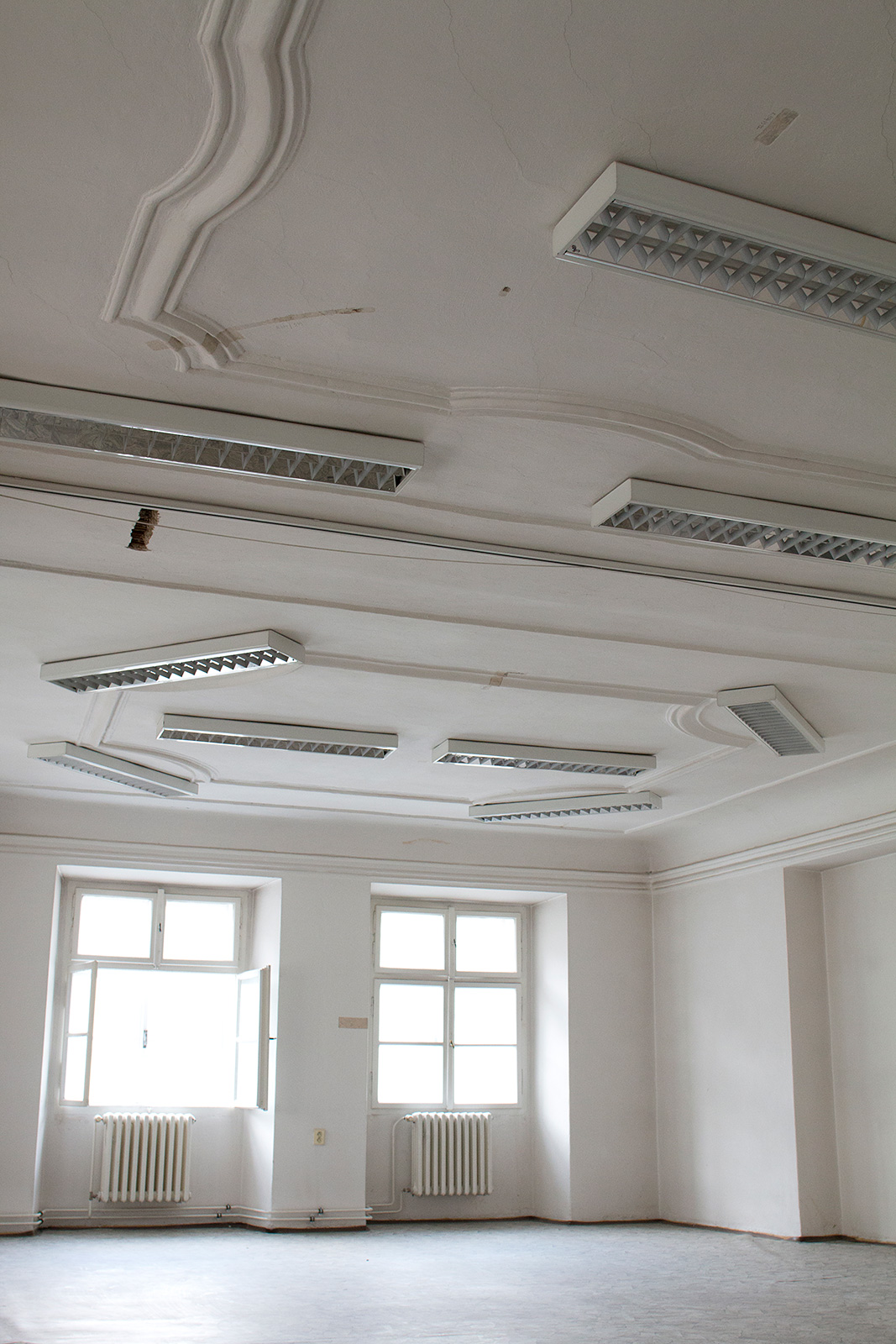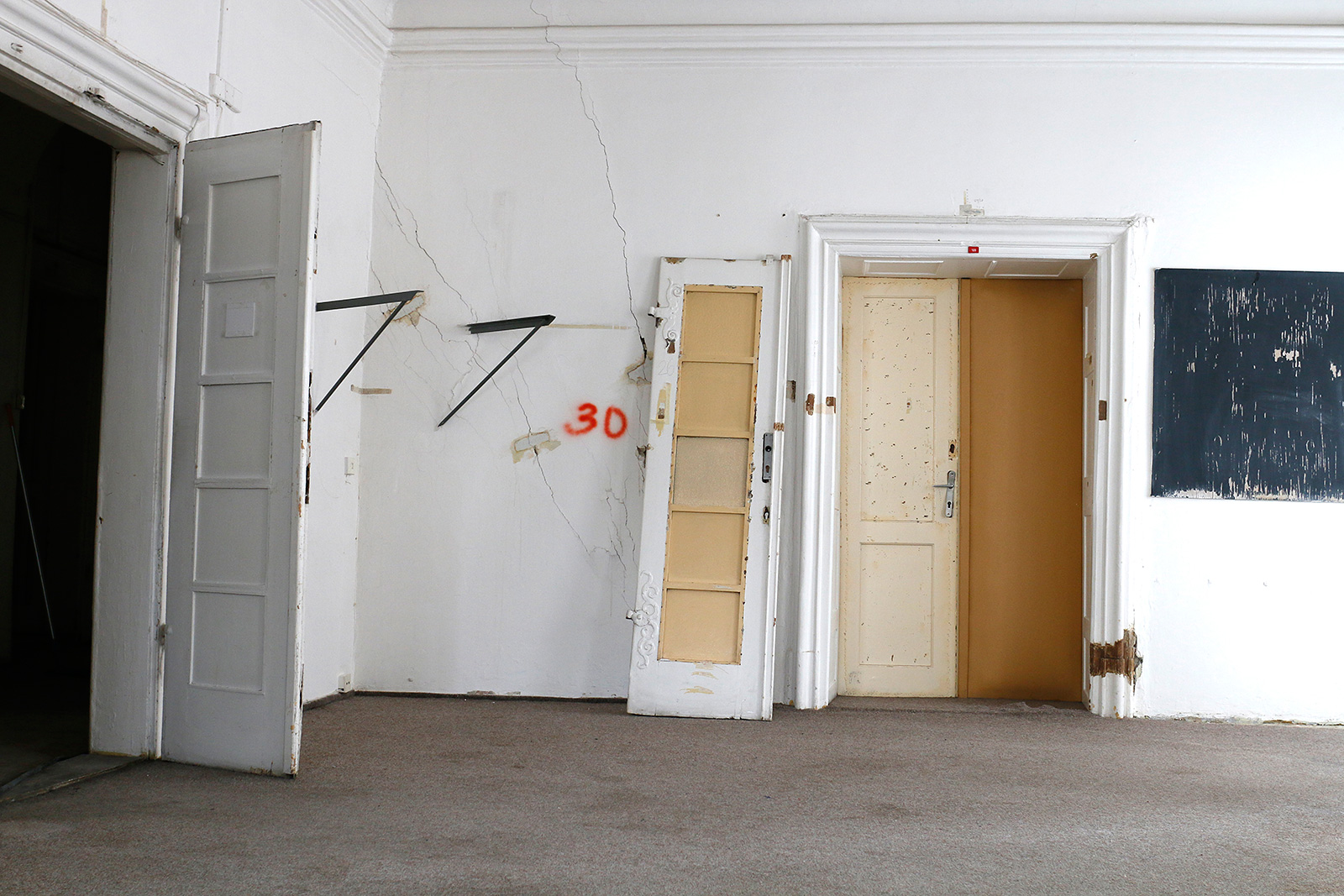Places of Act 2016 – Municipal buildings
A site-specific project for public space in Prague
Dear audiences,
Welcome to the municipal houses – this year’s place of act(ion)!
Since the beginning, our nearly 20-year journey through empty and abandoned buildings has slowly been moving from the city’s periphery to its center. We started out on the outskirts of Prague in the former sewage treatment plant in Bubeneč, and have gradually moved our way through factories, warehouses, brickworks, and breweries all the way to former tenements and commercial buildings in the city center. It was not planned this way – we merely let ourselves be attracted to each site’s specific genius loci and learned to inhabit a place that is not ours and whose future we could only rarely hope to influence. It is thus an all the greater pleasure to briefly settle into these buildings belonging to the City of Prague in order to show how they might serve the public. The city’s current leadership is, in fact, planning to turn these former municipal buildings into a Prague Creative Center, which will focus on education, culture, and creativity. The depopulated city center offers no decent cultural venue of this kind for locals or tourists, and so these buildings deserve to be a place promoting local participation.
If you leaf through various yellowed typewritten papers stored in the silence of the National Heritage Institute, you can read about the history of these three connected buildings that our festival will inhabit this year. With the passing years, they have held various names – U cepů, U Zlatého bažanta, U Trubačů, U Zlatého zvonečku, U zlatotepců, U zlaté hory – and thanks to these official records, you can even learn that their purchase price in 1417 was nearly 50 threescore of groschen, although it soon dropped to 30 threescore, and that their assessed value in 1429 was 62 threescore but just 33 threescore in 1433. The buildings’ price and their changing owners can be traced all the way to the time when they were acquired by the city. The description of their architectural details gives an idea of all the architectural dramas that have played out here – a pointed stone Gothic arch in the basement, a heart-shaped Baroque grate, Neoclassical mirrors in stucco frames, etc.
What important thing to say about this year’s program? In past years, we let ourselves be inspired by the activities organized by Belgian artist Edith Dekyndt under the heading of “Independent Research of Subjectivity.” We were so enchanted by the aptness and paradox of this phrase that we even used to wear patches with it on our bags and caps. The task of organizing an exhibition inspired by this concept went to art historian, curator, and the current assistant dean of studies at the Academy of Fine Arts in Prague, Pavlína Morganová. This choice fills me with great pleasure, and I am looking forward to Pavlína’s research efforts, which present some 40 artists across various generations and media, representing the Czech art scene at the start of the 21st century. We want to make the exhibition accessible to even the youngest generation, and so it includes a series of accompanying programs by which we hope to present contemporary art to children in a way that is both entertaining and educational. Thanks to workshops organized by “Do You Have a Knack for Art?”, our cooperation with City Gallery Prague, and our Drawing-and-Thinking Room created by artist Petra Herotová, children from primary and secondary schools will visit the exhibition in the afternoon hours.
Until recently, the municipal buildings were used by the City of Prague, and they even housed the Department of Culture. The many cheerless rooms and former offices inspired the participating artists to create five completely new site-specific theater performances, including an art installation, dance, a voiceband performance, and drama.
Last but not least, I would like to mention our “Future Forum” project, which first premiered on the subject of “Crisis as Opportunity” in the former Federal Assembly building. For this year, we have joined with curator Šárka Havlíčková to choose the subject of “I can’t stand change.” Together with invited guests from various fields, we will be looking for ways of actively experiencing change when it happens. Also on this year’s program is a new concept that we are calling “Subjectively!”, for which we have invited a professional firefighter, an art restorer, a surgeon, a photographer, a journalist, a hospice volunteer, an emergency service dispatcher, a documentary filmmaker, a boxing coach, a director, a lawyer, and many others. Welcome to the subjective world of each of us.
Denisa Václavová
Independent Research of Subjectivity
– exhibition for Municipal Houses
curator: Pavlína Morganová
artists:
Matěj Al-Ali, Zbyněk Baladrán, Veronika Bromová, Michaela Černická, Anna Daučíková, Dominik Gajarský, Petra Herotová, Eva Jiřička, Krištof Kintera, Vladimír Kokolia, Kateřina Konvalinová, Igor Korpaczewski, Eva Koťátková, Alena Kotzmannová, Nikol Kutíková, Martin Kyrych, Dominik Lang, Richard Loskot, Marie Lukáčová, Adéla Matasová, Andrea Medunová Součková, Pavel Mrkus, Jakub Nepraš, Karel Nepraš, Alice Nikitinová, Martina Nosková, Markéta Othová, Michal Pěchouček, Veronika Resslová, Lenka Rochovanská, Lucia Sceranková, Pavla Sceranková, Vladimír Skrepl, Jan Steklík, Tomáš Svoboda, Šárka Trčková, Aleksandra Vajd, Kateřina Vincourová, Monika Žáková
films:
Night Vision In Broad Daylight
Observations in contemporary Czech video
Site specific premieres:
Masopust: A Play for the People
Tereza Hradilková and collective: Swish
Žan Loose, Stanislav Majer and Ozren Mutak: Exactly the Moments
workshops for younger and older kids:
Theatres for kids:
TisíciHran: Violets and Candy Soap
Conferences, discussions, debates:
Future Forum III – I can’t stand change, or: How to free yourself from fear
A Future for the Municipal Buildings? Creative centers at home and abroad
Art: Import, Export – a discussion with Spolek Skutek
The roles and forms of art for children and youth within the context of societal changes
Special invitations:
Pro City walk:
A tour of Old Town square with Richard Biegel
Bar:
MEGA – make Europe great again – an audio-visual bedtime story – David Böhm and Jiří Franta
Take a look inside the Municipal houses:

Radniční domy | Foto: Libor Svoboda

Radniční domy | Foto: Libor Svoboda

Radniční domy | Foto: Libor Svoboda

Radniční domy | Foto: Libor Svoboda

Radniční domy | Foto: Libor Svoboda

Radniční domy | Foto: Libor Svoboda

Radniční domy | Foto: Libor Svoboda

Radniční domy | Foto: Libor Svoboda

Radniční domy | Foto: Libor Svoboda

Radniční domy | Foto: Libor Svoboda

Radniční domy | Foto: Libor Svoboda

Radniční domy | Foto: Libor Svoboda

Radniční domy | Foto: Libor Svoboda

Radniční domy | Foto: Libor Svoboda

Radniční domy | Foto: Libor Svoboda

Radniční domy | Foto: Libor Svoboda

Radniční domy | Foto: Libor Svoboda

Radniční domy | Foto: Libor Svoboda




